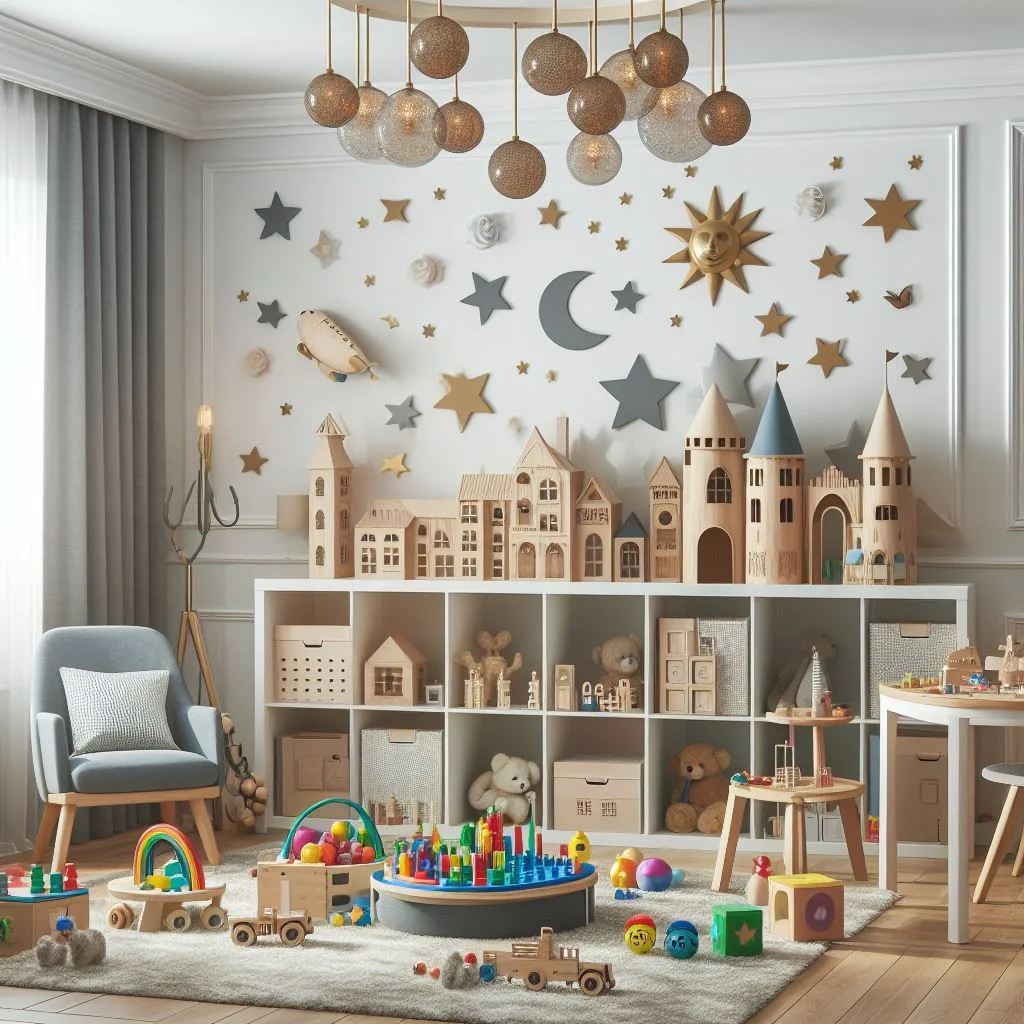Playroom Design Ideas: Sparking Imagination and Creativity

A playroom is more than just a storage space for toys; it’s a kingdom of imagination, a haven for creativity, and a launchpad for countless adventures. Whether you have a dedicated room or a designated corner, creating a well-designed playroom can spark joy, encourage learning, and nurture your child’s development.
This guide dives into inspiring playroom design ideas that cater to different ages, interests, and spaces. By incorporating these ideas, you can create a playroom that fosters your child’s imagination and fuels hours of fun and learning.
Designing for Different Age Groups:
- Early Explorers (Toddlers 1-3): For young toddlers, focus on sensory exploration and open-ended play. Include a soft play mat for crawling and tumbling, a variety of textured toys, and large building blocks. Low bookshelves stocked with colorful board books and chunky puzzles encourage exploration and early literacy skills.
- Creative Crusaders (Preschoolers 3-5): Preschoolers thrive on imaginative play. Create a dramatic play area with a play kitchen, a dress-up corner stocked with costumes and accessories, and a puppet theater for impromptu performances. An art and craft station with washable paints, crayons, and construction paper allows their creativity to blossom.
- Curious Constructors (Ages 5-8): School-aged children are brimming with curiosity and building skills. A sturdy workbench with tools (appropriate for their age) allows them to build, create, and experiment. Include a variety of building toys like Legos, Magna-Tiles, or wooden blocks to encourage their imagination and spatial reasoning. A designated reading nook with comfy cushions and a well-stocked bookshelf fosters a love for reading.
Tailoring the Playroom to Your Child’s Interests:
- The Budding Artist: For the artistic child, dedicate a wall for showcasing their masterpieces. A designated art area with a chalkboard, a whiteboard, and a variety of art supplies allows them to unleash their creativity and explore different artistic mediums.
- The Bookworm: Create a cozy reading nook with comfortable cushions, beanbags, and a well-stocked bookshelf curated to their age and interests. A reading tent adds a touch of whimsy and encourages them to delve into the world of books.
- The Little Scientist: Transform a corner into a mini science lab. Include a clear plastic container filled with water, sand, or rocks for exploration. Simple science kits and age-appropriate experiments nurture their curiosity and allow them to learn through play.
Space-Saving Solutions for Smaller Playrooms:
- Vertical Storage is Key: Maximize limited space with vertical storage solutions. Utilize wall-mounted shelves, cubbyholes, and pegboards for storing toys, books, and art supplies. Bins and baskets on lower shelves keep smaller toys organized and easily accessible.
- Multifunctional Furniture Plays a Role: Opt for furniture that serves multiple purposes. A storage ottoman can hold toys while providing additional seating. A foldable craft table offers a dedicated workspace without taking up permanent space.
- Rotate Toys Regularly: Having too many toys at once can be overwhelming for children. Rotate toys regularly to keep things fresh and spark their interest in rediscovering old favorites. Utilize storage bins or ottomans to keep rotated toys tucked away.
Creating a Playful and Inviting Atmosphere:
- Let Color Be Your Guide: Use bright, cheerful colors to create a stimulating and playful environment. Consider painting an accent wall with a playful color or adding colorful floor mats and throw rugs.
- Embrace Playful Lighting: String lights, fairy lights, or a fun lamp can add a touch of whimsy and create a cozy atmosphere for reading or quiet play.
- Incorporate Playful Decor: Wall decals, murals, or themed wallpaper can add visual interest and reflect your child’s favorite colors or characters.
- Don’t Forget the Floor: A large play mat with roads, a city scape, or a farm scene can inspire imaginative play and serve as a backdrop for endless storytelling adventures.
Designing a Playroom is a Journey, Not a Destination
The most important aspect of a playroom is that it is a space where your child feels comfortable, safe, and inspired to play. This guide offers a starting point; customize it to fit your child’s unique personality and interests.
Here are some additional tips for a successful playroom:
- Involve Your Child: Let your child participate in the design process by asking for their input on color schemes, themes, or furniture choices.
- Prioritize Safety: Ensure the playroom is safe by anchoring furniture to walls, using soft floor coverings, and age-appropriating toys.




